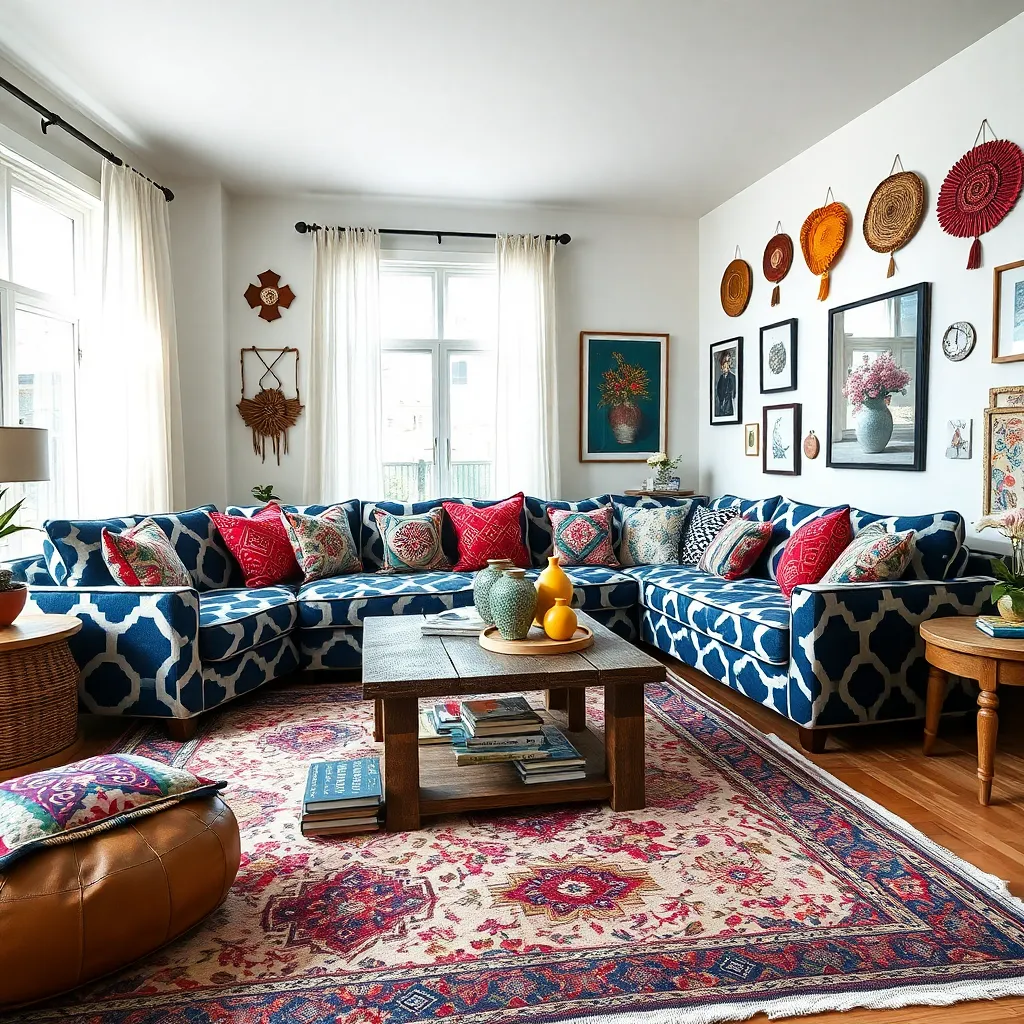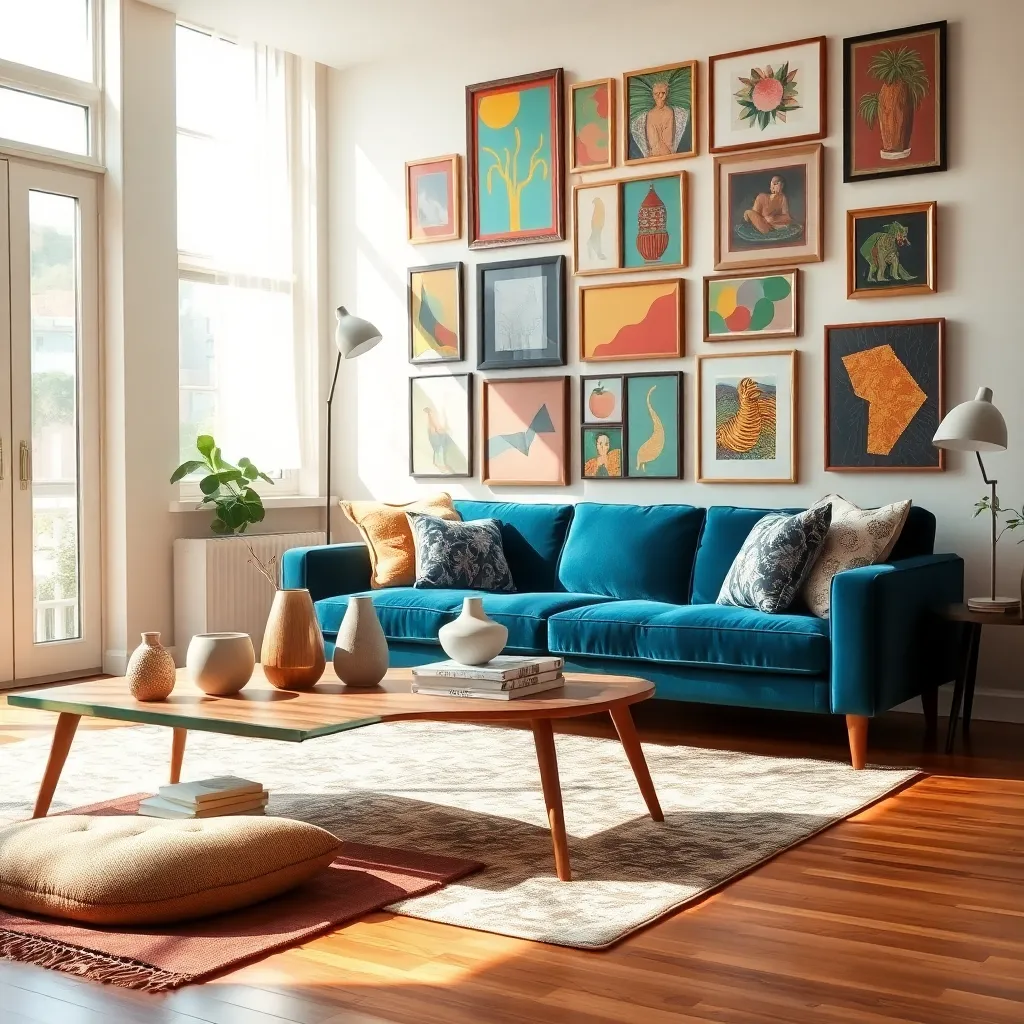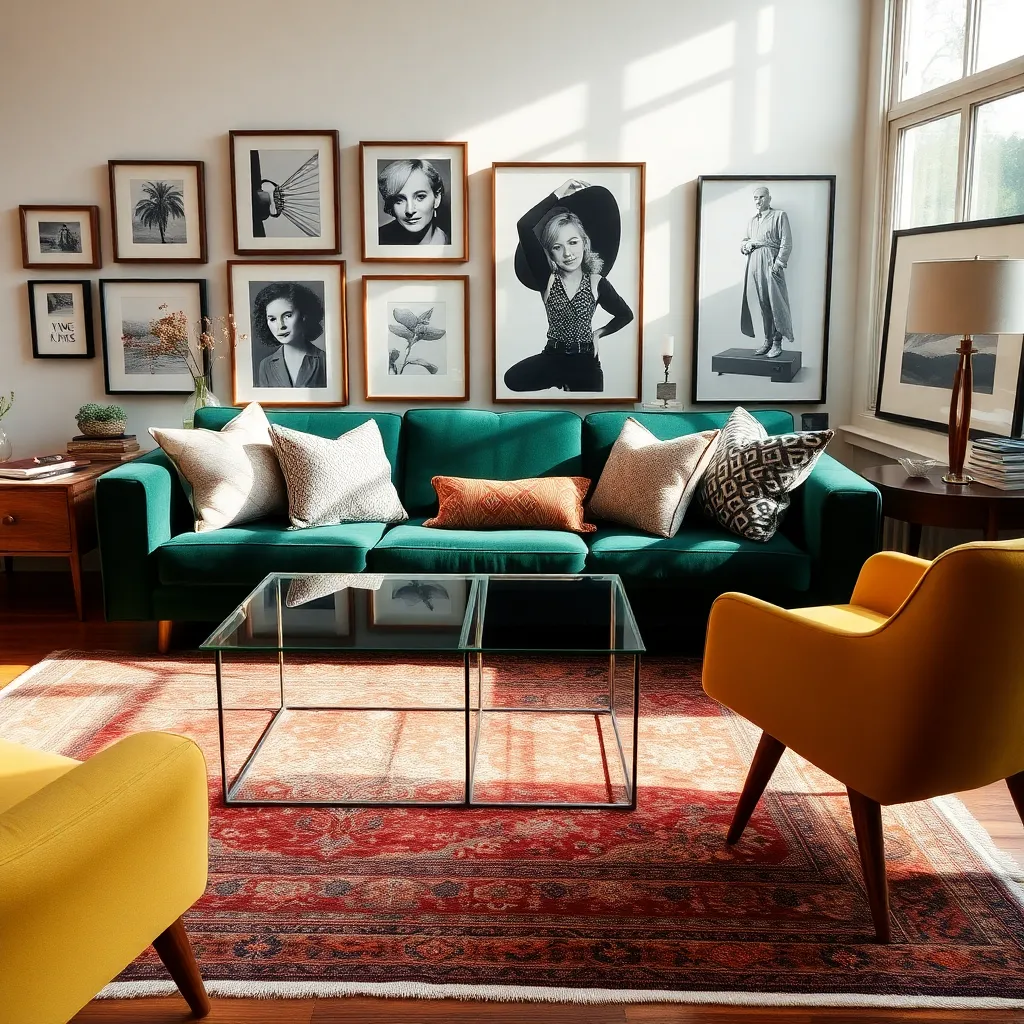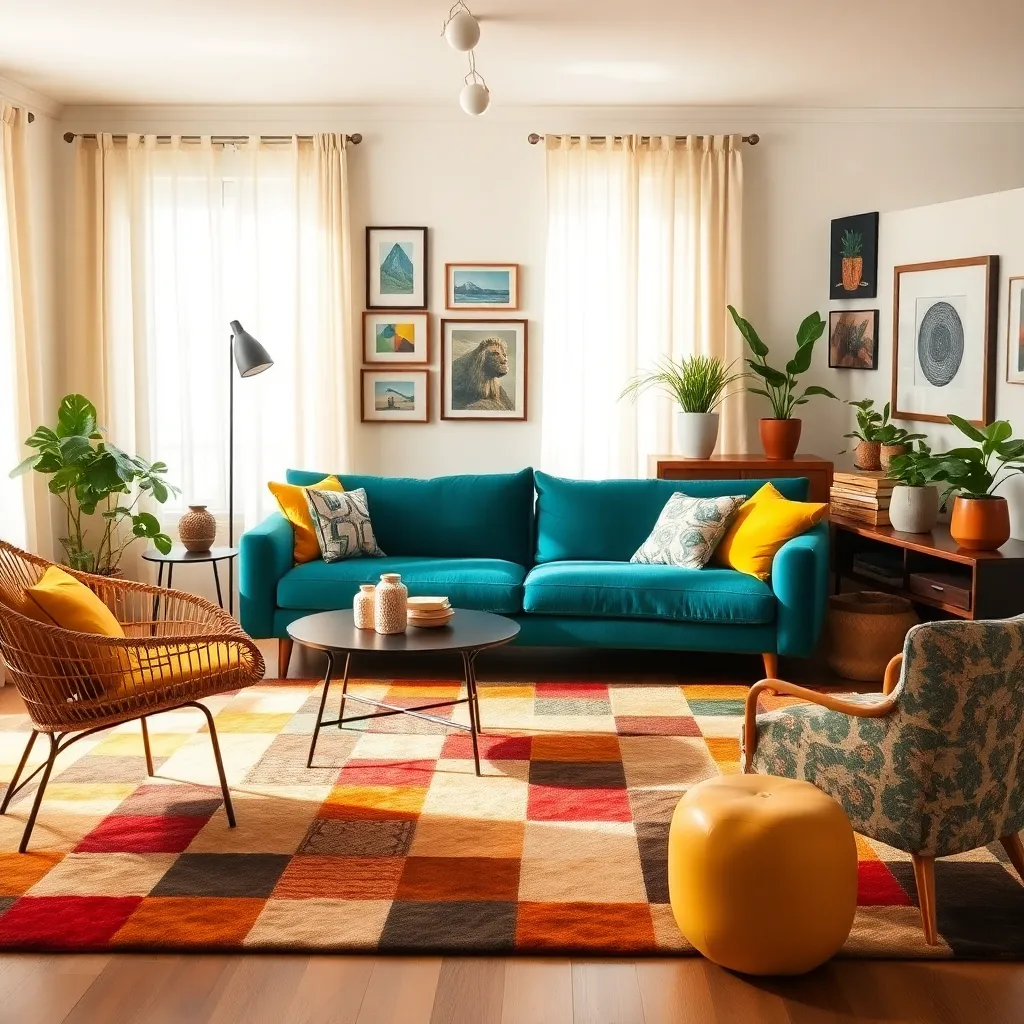Welcome to the vibrant world of eclectic home styling, where creativity knows no bounds and your personal touch reigns supreme. Whether you’re just dipping your toes into the world of interior design or you’ve been rearranging rooms with flair for years, exploring an eclectic style offers endless opportunities to express your unique taste. At its heart, eclectic design is about blending diverse styles, eras, and textures to create spaces that are as dynamic as they are comfortable. This approach is not merely a mashup of random decor but an artful composition that tells a story—your story.
Eclectic home styling is crucial for those who crave individuality in their living spaces. It allows you to break away from rigid design templates and infuse character into your home with layers of colors, patterns, and unexpected elements. In this article, you’ll uncover the secrets to mastering eclectic design, from balancing contrast to curating collections that harmonize beautifully. We will guide you through practical tips on how to mix and match with confidence, ensuring your home is both stylish and cohesive.
As you embark on this exciting journey, remember that eclectic styling is all about embracing the unexpected and finding beauty in contrasts. You’ll learn how to blend different furniture styles seamlessly and incorporate a variety of textures to add depth and interest. This guide will empower you to reflect your personality in every room, creating an inviting and inspiring space that feels truly yours. Prepare to unlock the full potential of your home and discover the joy of eclectic design—where creativity and comfort go hand in hand.
Understanding Eclectic Design Principles

Eclectic design is all about the artful combination of different styles, textures, and colors to create a harmonious space. Begin by choosing a neutral base color for your walls, such as soft beige or light grey, to provide a versatile backdrop for more vibrant elements.
Next, focus on furniture selection that mixes various design eras and styles, such as pairing a mid-century modern sofa with a vintage wooden coffee table. To maintain balance, ensure that the scale and proportion of each piece complement the overall room dimensions.
Color schemes in eclectic design should be bold yet cohesive, with one or two dominant colors and several accent hues. Consider using a color wheel to help identify complementary tones that can be incorporated through accessories like throw pillows and artwork.
Incorporate diverse textures to add depth and interest, such as a plush velvet armchair, a rustic jute rug, or a smooth glass lighting fixture. These contrasting materials not only introduce visual appeal but also invite tactile exploration, making your space feel more engaging.
For advanced decorators, layering different patterns can elevate an eclectic room to new heights. When combining patterns, aim to vary their scale and motif; for example, pair a large floral print with a smaller geometric design to avoid overwhelming the space.
Mixing Patterns with Confidence

When mixing patterns in your home, start by selecting a dominant pattern to anchor the room. This could be a large, bold floral on a sofa or a geometric wallpaper, establishing a foundation upon which other patterns can build.
To complement your dominant pattern, choose a secondary pattern that shares at least one color with it. This technique ensures a harmonious look, allowing the two patterns to coexist without clashing.
Additionally, varying the scale of your patterns is crucial for an eclectic yet cohesive feel. Pair a large-scale pattern with smaller ones, such as a striped throw pillow on a floral armchair, to create visual interest without overwhelming the space.
For beginners, an easy way to mix patterns is by focusing on textiles like rugs, cushions, and curtains. These elements are relatively low-risk and can be swapped out easily if the combination doesn’t work as planned.
Advanced decorators might explore mixing patterns in unexpected ways, like pairing a polka dot rug with a plaid ottoman. The key is to maintain a balance by limiting the color palette to ensure the mix feels deliberate and sophisticated.
When arranging furniture, use patterns to draw attention to specific areas, such as a patterned rug under a coffee table to anchor the seating area. This not only helps in defining space but also adds layers of texture, making the room feel more dynamic and inviting.
Curating a Diverse Decor Collection

Creating a diverse decor collection begins with mixing pieces that tell a story and bring personality into your space. Start by selecting a few key pieces that stand out, such as a vintage armchair or a contemporary sculpture, to anchor your collection and set the tone for the room.
To achieve a balanced look, consider the scale and proportion of each decor item in relation to the others. For instance, if you have a large, bold piece like a colorful abstract painting, complement it with smaller, subtler items like delicate ceramic vases or textured throw pillows to create visual interest without overwhelming the space.
Color coordination is crucial when curating a diverse decor setup, so choose a cohesive color palette that ties everything together. For a more cohesive look, opt for neutral-colored furniture and incorporate pops of color through accessories like bright rugs or vibrant wall art, ensuring these accents reflect the predominant hues of your chosen palette.
Layering is an effective way to add depth and richness to your decor, making the space feel curated and lived-in. Use materials such as natural wood, metallic finishes, and woven textiles to create a variety of textures that complement one another, enhancing the tactile experience of the room.
Incorporating Vintage and Modern Elements

Blending vintage and modern elements can create a truly unique and personalized space. To achieve this, consider starting with a neutral base—like white or soft grey walls—to allow both styles to shine without clashing.
Incorporate vintage furniture by choosing a statement piece, such as a mid-century modern armchair or a retro sideboard. Position it in a focal area of your room and complement it with modern accents like sleek metallic lighting or contemporary art.
For a balanced look, use a mix of textures to tie the two styles together. Pair a vintage wooden dining table with modern, upholstered chairs, opting for materials like velvet or leather that add richness and depth.
Color can also play a crucial role in marrying old and new. Consider a palette that includes both warm and cool tones—like soft pastels alongside bold, modern hues such as navy or charcoal—for a harmonious blend.
Advanced decorators might explore juxtaposing styles more boldly, such as placing an antique rug beneath a minimalist glass coffee table. This contrast can be striking, so ensure there’s a common thread, like color or material, to maintain cohesion.
Personalizing Spaces with Unique Accents

Adding unique accents to your home is an effective way to infuse personality and character into your space. Consider featuring a collection of curated items, such as handcrafted ceramics or vintage glassware, to create visual interest and tell a story.
Start by choosing a color palette that complements your existing decor while allowing your accents to stand out. Bold colors like deep blues or emerald greens can create striking contrasts, while more muted tones like blush pink or sage green offer a subtle integration.
Incorporate accents through various textures and materials to add depth to your design. For instance, a soft throw blanket draped over a leather chair or a woven basket on a sleek metal shelf can provide a rich layering effect.
For those with a more advanced eye, experiment with unexpected pairings to create an eclectic vibe that feels cohesive yet intriguing. Mix and match materials such as wood and marble or pair geometric patterns with organic shapes.
- Use accent lighting to highlight your unique pieces, such as a spotlight on an art piece or a pendant light over a statement table.
- Rotate your accents seasonally to keep your space feeling fresh and dynamic.
- Consider the scale of your accents; larger pieces can serve as focal points, while smaller items should be grouped for impact.
Personalizing your space with unique accents requires a blend of creativity and thoughtful placement. Let your home reflect your personality by integrating accents that spark joy and inspire conversation.
Conclusion: Growing Success with These Plants
In exploring ‘Eclectic Home Styling,’ we’ve delved into five key relationship concepts: embracing individuality within partnership, cultivating shared spaces that reflect both partners, balancing compromise with personal expression, fostering open communication through home projects, and nurturing growth by adapting to change. These principles not only enrich your living environment but also strengthen your emotional connection.
As a next step, consider selecting a small area in your home to redesign together. Use this opportunity to apply what you’ve learned by incorporating elements that resonate with both of you, sparking dialogue and creativity. Remember, the journey of styling your home is a metaphor for nurturing your relationship—both require patience, understanding, and a touch of spontaneity.
Make sure to save or bookmark this article as a handy reference for your ongoing relationship journey. By revisiting these insights, you’ll be better equipped to create a harmonious home that mirrors the vibrancy of your partnership.
Look forward with optimism: by investing in these practices, you’re not only styling a beautiful home but also laying the foundation for enduring relationship success. Embrace this journey with enthusiasm, knowing that every shared experience brings you closer together.
